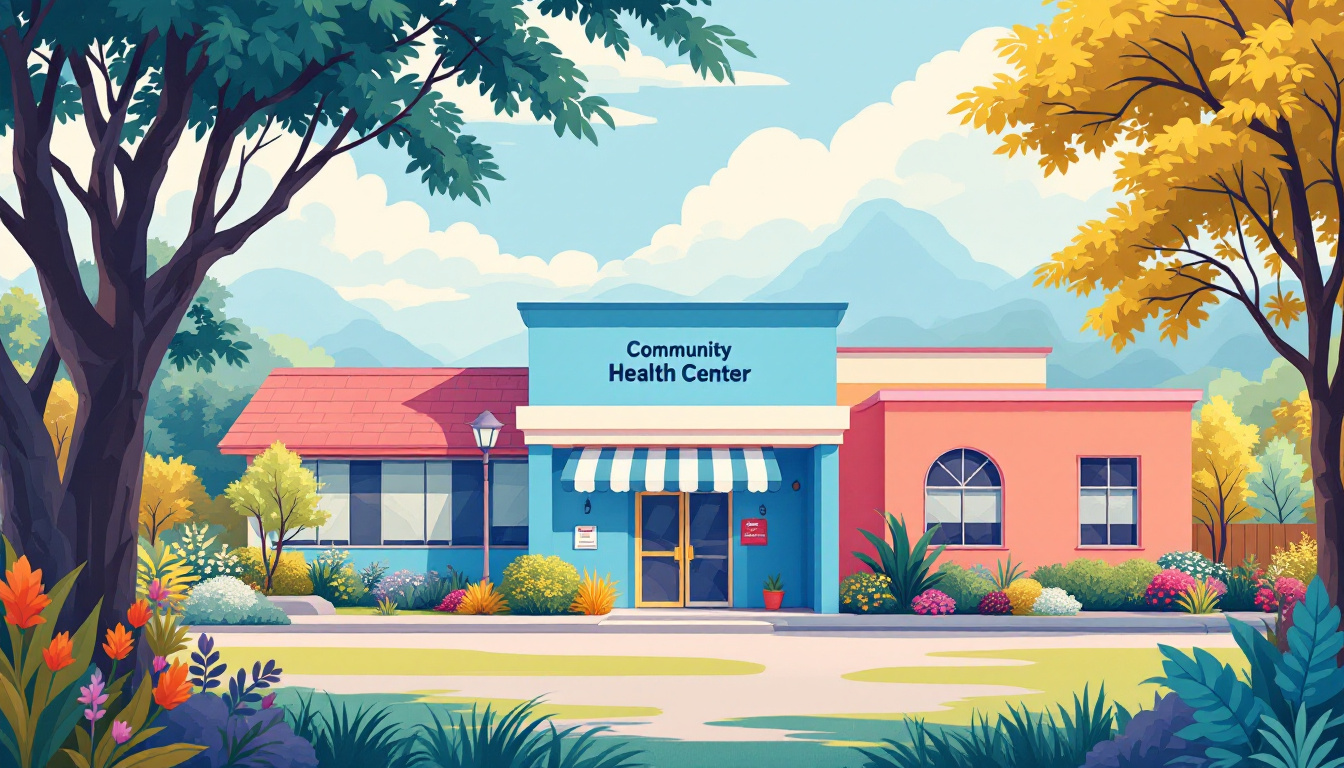How to access healthcare services in rural areas
April 24, 2025
Expanding Access to Healthcare in America's Rural Heartland


Understanding the Challenges and Exploring Solutions
Accessing healthcare in rural areas presents unique challenges due to geographic, economic, and infrastructural barriers. Despite over 60 million Americans residing in these communities, many face difficulties reaching primary, emergency, and specialized care. This comprehensive overview examines the barriers, strategies, policies, and innovations vital to improving healthcare access and health outcomes for rural populations.
Understanding the Healthcare Landscape in Rural Areas
What types of healthcare services are available in rural communities?
Rural areas provide a variety of healthcare services essential for community well-being. These include primary care, which is often the first point of contact for health concerns, and specialized services such as dental care, behavioral health, emergency services, and public health programs. Despite their importance, these services are often limited due to resource constraints. For instance, mental health and oral health services are scarce, and many rural counties lack hospital-based obstetric services, which impacts maternal and infant health outcomes.
How accessible are healthcare facilities and how are providers distributed?
Access to healthcare facilities in rural regions is a major challenge. Over 4 million rural residents do not have a hospital in their county, and many rural hospitals have closed recently, leaving communities with fewer options for inpatient and emergency care. Healthcare providers, including physicians and dentists, are fewer per capita compared to urban areas — with about 40 primary care providers per 100,000 residents in rural settings. Most rural hospitals tend to be Critical Access Hospitals, with fewer than 50 beds, which often struggle financially due to underpayment from private insurers and traditional Medicare plans.
What are the specific health needs of the rural population?
Rural populations tend to be older, facing higher rates of chronic illnesses such as diabetes, heart disease, and cancer. They also experience higher mortality from leading causes like unintentional injuries, including motor vehicle crashes and opioid overdoses. Maternal health services are limited, with over half of rural counties lacking hospital obstetric care, leading to worse maternal and infant health outcomes. Mental health care is another significant need, as rural areas have a chronic shortage of mental health professionals, affecting veterans and civilians alike.
What are the common barriers to healthcare access in rural regions?
Access to healthcare in rural communities faces multiple interconnected barriers. Many residents must travel long distances—often over 20 miles—to reach the nearest hospital or primary care provider. Limited transportation options aggravate this issue, making timely care difficult. Workforce shortages mean fewer healthcare providers are available, leading to longer wait times and reduced service capacity.
Financial barriers are also prevalent; higher premiums and fewer insurance options, including a higher uninsured rate, limit affordability. Digital infrastructure deficits hamper the use of telehealth, which could otherwise serve as a vital resource for remote consultations. Social stigma, particularly surrounding mental health and reproductive services, discourages some residents from seeking care. To tackle these issues effectively, strategies like telehealth expansion, mobile clinics, workforce development, and alternative healthcare delivery models are essential.
Barriers to Healthcare Access in Rural Regions

What are the common barriers to healthcare access in rural regions?
Rural communities face multiple and interconnected barriers that make healthcare access challenging. Geographical isolation is one of the primary issues, with residents often living considerable distances from hospitals, clinics, and specialists. Longer travel times, sometimes averaging 17 miles or more to the nearest facility, and limited transportation options, further hinder timely care.
Workforce shortages significantly impact the availability of healthcare providers in rural areas. There are fewer physicians, dentists, mental health professionals, and specialists per capita compared to urban settings. Many rural hospitals have closed or face closure, especially Critical Access Hospitals, which serve as essential healthcare hubs. The loss of local facilities leads to increased travel distances for all types of care, including emergency, obstetric, and outpatient services.
Financial hurdles also pose serious obstacles. Rural residents tend to have higher uninsured rates and lower incomes, which make affording healthcare coverage and services difficult. Although programs like Medicaid expansion have helped, many individuals still face affordability issues. The economic viability of rural hospitals is often compromised due to lower reimbursements from private insurers and Medicare Advantage plans, leading to closures that further restrict access.
Additionally, health literacy levels are generally lower in rural populations. This can cause delays in seeking care, poor management of chronic illnesses, and underuse of preventive services. Social stigma, particularly surrounding mental health and reproductive health, discourages some residents from accessing available services.
Finally, digital infrastructure issues limit the potential of telehealth as an alternative mode of healthcare delivery. Many rural areas lack sufficient broadband access, preventing residents from utilizing telemedicine for consultations, chronic disease management, or mental health support. Limited internet connectivity and technological barriers exacerbate existing disparities.
Addressing these multifaceted barriers requires a comprehensive approach that emphasizes infrastructure development, workforce training, innovative healthcare delivery models, and policy reforms to improve accessibility and health outcomes in rural communities. Strategies include expanding telehealth, supporting community-based care, and ensuring equitable financial reimbursement for rural healthcare providers.
| Barrier Type | Challenges | Impact | Possible Solutions |
|---|---|---|---|
| Geographical | Long distances, transportation issues | Delayed care, increased travel burden | Mobile clinics, improved transportation services |
| Workforce Shortages | Fewer providers, hospital closures | Limited service availability | Loan repayment programs, scope-of-practice expansion |
| Financial Constraints | Higher uninsured rates, low income | Reduced care use, poorer health | Medicaid expansion, financial assistance programs |
| Health Literacy & Stigma | Limited understanding, social taboos | Underuse of services, poor management | Community education, culturally sensitive outreach |
| Digital Infrastructure | Limited broadband, technology gaps | Impaired telehealth use | Broadband expansion, telehealth investment |
Understanding these specific barriers helps in crafting targeted interventions that can improve healthcare access and health outcomes across rural America.
Innovative Strategies to Overcome Access Challenges
What strategies can improve healthcare access in rural communities?
Improving healthcare access in rural communities depends on a combination of innovative and practical approaches that address the unique challenges these areas face. One of the most promising strategies is expanding telehealth services and remote consultations. Telehealth allows patients to connect with healthcare providers without the need for long-distance travel, which is often a major barrier in rural areas. Ensuring reliable broadband connectivity is essential to support these services, and ongoing efforts aim to expand high-speed internet access across underserved regions.
Mobile health clinics and outreach programs are also vital in bringing healthcare directly to rural residents. These mobile units can deliver vaccinations, health screenings, chronic disease management, and other essential services, especially in locations where healthcare facilities are scarce or nonexistent.
Strengthening the rural healthcare workforce is another critical element. Targeted recruitment, training, and retention programs — including rural-specific training tracks for medical students and residents — help address the persistent shortages of physicians, dentists, behavioral health providers, and other healthcare professionals.
Partnerships with larger healthcare networks and non-governmental organizations (NGOs) can further bolster rural healthcare infrastructure. These collaborations often provide additional resources, share specialized expertise, and support community health initiatives, improving health literacy and engagement.
Adopting innovative care models, such as Patient-Centered Medical Homes (PCMH), can enhance service coordination and continuity of care. In this model, teams of providers work together to deliver comprehensive, accessible, and patient-focused services.
Overall, a multifaceted approach involving technology, workforce development, community engagement, and supportive policies is essential to sustain and improve healthcare access in rural communities. These efforts collectively aim to reduce disparities, improve health outcomes, and create a resilient, equitable healthcare system for rural populations.
Federal and State Initiatives Supporting Rural Healthcare
 Various federal, state, and local programs work together to improve healthcare access in rural areas across the United States. At the federal level, agencies like the Health Resources and Services Administration (HRSA), the Centers for Disease Control and Prevention (CDC), and the National Rural Health Association (NRHA) play vital roles.
Various federal, state, and local programs work together to improve healthcare access in rural areas across the United States. At the federal level, agencies like the Health Resources and Services Administration (HRSA), the Centers for Disease Control and Prevention (CDC), and the National Rural Health Association (NRHA) play vital roles.
HRSA’s Federal Office of Rural Health Policy (FORHP) offers grants and support to community-based programs that strengthen rural healthcare infrastructure. These initiatives help build the capacity of rural health clinics, rural hospitals, and emergency services, ensuring they can better serve their communities.
Policy measures such as expanding the Rural Emergency Hospital (REH) program, which provides hospitals with new Medicare reimbursement models to remain financially viable, are critical. Furthermore, efforts to expand scope-of-practice laws for nonphysician providers like nurse practitioners and physician assistants help address workforce shortages.
State governments also contribute through legislation, funding, and innovative models aimed at maintaining and improving rural healthcare facilities. Examples include providing loan repayment programs for rural healthcare providers, supporting telehealth expansion, and establishing new hospital types tailored for rural needs.
Advocacy organizations and research groups promote best practices, address barriers like substance use disorders, and support the integration of technology in rural health systems. These collective actions are designed to sustain rural hospitals, improve emergency and maternity services, and enhance overall health outcomes.
In addition, programs targeting health equity and addressing social determinants—such as transportation support and community health worker deployment—are vital. The overall goal is to create sustainable, accessible healthcare systems that serve rural populations effectively.
More information can be found by searching for "Rural healthcare policy initiatives and programs."
These collaborations aim to preserve essential healthcare services in rural communities, reducing disparities, and ensuring that rural Americans receive quality care close to home.
Financial Support and Funding Opportunities
 Several programs and funding sources are dedicated to bolstering rural healthcare systems. The Health Resources and Services Administration (HRSA) plays a prominent role by providing grants to expand healthcare infrastructure, strengthen health networks, and improve emergency services in underserved rural areas. These grants support initiatives like community health centers and hospital upgrades, ensuring essential services remain accessible.
Several programs and funding sources are dedicated to bolstering rural healthcare systems. The Health Resources and Services Administration (HRSA) plays a prominent role by providing grants to expand healthcare infrastructure, strengthen health networks, and improve emergency services in underserved rural areas. These grants support initiatives like community health centers and hospital upgrades, ensuring essential services remain accessible.
The Federal Office of Rural Health Policy (FORHP) manages various grants aimed at building capacity within rural healthcare. This includes initiatives designed to address specific access challenges and improve healthcare delivery models. One significant focus is broadband expansion, where programs like the Rural Healthcare Program allocate funds to improve internet connectivity, a critical component for expanding telehealth services.
Funding is also directed through programs such as the Rural Communities Opioid Response Program (RCORP), which targets prevention and treatment of opioid use disorder in rural populations. These targeted efforts aim to combat ongoing health crises while enhancing service availability.
In addition, technical assistance programs, including loans and grants like the Rural Economic Development Loan and Grant Program, help rural healthcare providers upgrade facilities and expand their service scope. Certification programs further support providers in meeting regulatory standards, boosting operational capacity.
State and federal governments also employ loan repayment and workforce incentives as strategic tools. Loan repayment programs, such as those managed by HRSA’s National Health Service Corps, offer scholarships and repayment assistance to healthcare providers who commit to serving in rural communities. These incentives help mitigate workforce shortages by attracting physicians, nurses, and other health professionals.
Supporting rural hospitals is another focus area. Initiatives like the Medicare Rural Hospital Flexibility Program facilitate the development of new hospital models, such as Rural Emergency Hospitals, which provide critical outpatient and emergency services while receiving enhanced reimbursement. Funding opportunities often include grants, tax credits, and employment incentives designed to sustain these vital facilities.
Altogether, these programs and funding avenues form a comprehensive framework aimed at enhancing the quality, accessibility, and sustainability of healthcare in rural areas, ultimately striving to reduce disparities and improve health outcomes for rural populations.
Telehealth and Health IT Innovations in Rural Healthcare
How can telehealth and technological solutions address healthcare disparities in rural areas?
Telehealth and digital health technologies have become vital tools in bridging the healthcare access gap faced by rural communities. By enabling remote consultations, remote patient monitoring, and virtual care, these solutions reduce the need for long-distance travel, which is often a significant barrier for rural residents.
Remote patient monitoring (RPM) allows healthcare providers to keep track of chronic conditions like hypertension or diabetes outside of clinical settings. This continuous oversight helps in early intervention and better disease management, leading to improved health outcomes. Virtual visits and telehealth consultations offer access to specialists, mental health professionals, and emergency services, which might be unavailable locally.
Health Information Technology (HIT) systems, such as electronic health records (EHRs), facilitate seamless information exchange among providers. This interoperability ensures coordinated care, reduces duplicative testing, and improves population health management, important factors given the high prevalence of chronic illnesses in rural populations.
Funding from federal programs during the COVID-19 pandemic expanded telehealth utilization, supporting infrastructure improvements and policy adjustments. These adaptations made telehealth more accessible and sustainable for rural healthcare providers.
Overall, technology-driven innovations promote equitable healthcare services, bolster provider support and training, and enhance patient engagement. They directly address disparities by making comprehensive, timely, and quality care attainable for underserved rural communities, leading to healthier, more resilient populations.
Addressing Workforce Shortages and Training Needs
What are the challenges faced by the rural health workforce, and how do they affect healthcare access?
Rural America struggles with a chronic shortage of healthcare professionals, including primary care doctors, specialists, nurses, and maternal health providers. High burnout rates, retirements, and industry exits have worsened these shortages, especially during the COVID-19 pandemic.
This staffing deficit results in limited access to timely healthcare, longer wait times, and increased travel distances for patients. With fewer providers available locally, rural residents often delay seeking care, leading to more advanced health conditions and worse outcomes.
The uneven distribution of healthcare workers further compounds these issues, as most professionals prefer urban or suburban settings due to better amenities, higher salaries, and professional growth opportunities. In addition, financial barriers such as lower reimbursement rates and limited training opportunities hinder recruitment.
Rural healthcare facilities often rely on temporary staffing or traveling providers, which can compromise continuity and quality of care. Policies that restrict scope of practice for non-physician providers also limit the ability of nurse practitioners, physician assistants, and dental health aides to fill provider gaps.
Efforts to mitigate these challenges include expanding rural training programs, such as clinical rotations in rural settings, and increasing tele-education initiatives to support ongoing workforce development. Federal programs and incentives like loan repayment plans encourage providers to work in underserved areas.
While progress has been made, significant workforce gaps persist, adversely affecting healthcare access, preventative care, management of chronic diseases, and emergency services in rural communities.
| Challenge | Impact on Access | Supporting Strategies |
|---|---|---|
| Provider shortages | Longer travel for care, delays | Recruitment programs, incentive payments |
| Skill gaps | Limited specialist services | Telehealth, training expansion |
| Training deficits | Fewer local educational opportunities | Rural clinical rotations, tele-education |
| Workforce retention | High turnover rates | Scope-of-practice reforms, community integration |
Addressing these workforce issues through targeted training, policy adjustments, and innovative telehealth solutions will be vital for improving healthcare access and health outcomes in rural populations.
Community and Policy Initiatives for Enhancing Healthcare Access

How do mobile clinics and community outreach programs help overcome healthcare access issues?
Mobile clinics and community outreach efforts play a vital role in bridging the healthcare gap in underserved rural areas. By bringing essential health services directly to the doorsteps of populations facing barriers such as transportation difficulties, provider shortages, and geographical isolation, these programs significantly improve access to care.
Mobile clinics are equipped to deliver a broad spectrum of services, including primary care, immunizations, chronic disease management, behavioral health services, and preventive screenings. They often utilize telehealth technology, leveraging high-speed internet connections to connect patients with specialists remotely, which is especially beneficial where local specialty services are unavailable.
Community outreach programs extend beyond mobile clinics by actively engaging local populations. They involve deploying community health workers who build trust, provide health education, and assist with health insurance navigation and social support, addressing social determinants like housing, nutrition, and transportation.
These initiatives are cost-effective, reducing unnecessary emergency room visits and hospitalizations. They also help in early detection of health issues, leading to better health outcomes. During crises such as the COVID-19 pandemic, they proved crucial in delivering testing, vaccination, and education to at-risk groups.
Overall, community and mobile clinic programs promote health equity by making healthcare accessible and acceptable, adapting services to community needs, and fostering ongoing relationships that improve long-term health and well-being in rural and vulnerable populations.
For more detailed insights on community outreach and mobile clinics in rural healthcare, search: "Community outreach and mobile clinics in rural healthcare."
Measuring and Improving Healthcare Access in Rural Regions

How is healthcare access in rural areas measured and evaluated?
Assessing healthcare access in rural communities involves a mix of data collection methods, metrics, and community assessments. Quantitative indicators such as the number of healthcare providers per capita, patient travel times, and hospital or clinic availability are central to understanding access levels. For example, the health professional shortage area (HPSA) designations identify regions with insufficient healthcare providers.
Additional key measures include analyzing insurance coverage data, especially levels of Medicaid and Children's Health Insurance Program (CHIP) enrollment at the county level, which reflect economic barriers to care. Travel distance and time to the nearest hospital or clinic are also critical, with longer travel distances correlating with reduced access. Wait times for primary or specialist services, as well as local healthcare facility closures—like hospitals or pharmacies—offer insights into service gaps.
Beyond these statistics, health outcomes such as morbidity, mortality, and preventive care utilization provide vital context. For instance, higher rates of preventable hospitalizations or maternal infant mortality signal poor access.
Several assessment tools and methodologies support these evaluations. Administrative data analysis from insurance claims helps track utilization patterns, while community needs assessments engage local populations to identify barriers like transportation difficulties, low health literacy, and internet access issues crucial for telehealth.
In essence, these multi-layered evaluations form a comprehensive picture of healthcare accessibility in rural environments, guiding targeted policy interventions and resource allocations.
Sustainable Solutions for Rural Healthcare Access
Ensuring equitable healthcare access in rural communities requires a multi-pronged approach that combines infrastructure investment, workforce development, technological innovation, and policy reforms. Expanding telehealth, mobile clinics, and community-based programs can bridge geographic and social gaps, while targeted funding and legislative support sustain essential health services. Emphasizing training, scope-of-practice expansion for nonphysician providers, and engaging communities in planning can foster resilient healthcare systems. Ultimately, collaboration among federal, state, local agencies, and community organizations is vital to achieve lasting improvements, reduce disparities, and foster healthier rural populations.
References
- Healthcare Access in Rural Communities Overview
- How to Improve Health Care in Rural Areas - Tulane University
- Why Health Care Is Harder to Access in Rural America | U.S. GAO
- About Rural Health Care - NRHA - National Rural Health Association
- Addressing Rural Health Challenges Head On - PMC
- Exploring Opportunities to Improve Rural Healthcare Access ...
- About Rural Health - CDC
- What improves access to primary healthcare services in rural ...
- Bridging the gap: Addressing health inequities in rural communities
- State Legislatures Moving to Increase Rural Health Care Access































































































.jpeg)











































































































































































































.avif)























































.jpeg)

































































.jpeg)














.jpg)









































.jpeg)









































































.avif)




.avif)




























































































































































































































